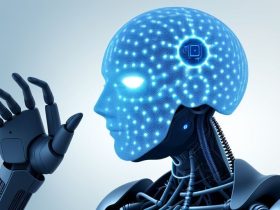In an era where technology is reshaping every aspect of life, Artificial Intelligence (AI) stands at the forefront of innovation. From self-driving cars to personalized recommendations on streaming platforms, AI has become an integral part of our daily lives. But how does AI work? Understanding the mechanisms behind this transformative technology not only satisfies curiosity but also empowers individuals and businesses to harness its potential effectively.
At its core, AI mimics human intelligence by processing vast amounts of data, recognizing patterns, and making decisions with minimal human intervention. This article will delve into the intricacies of AI, exploring its fundamental components, real-world applications, and the future it promises.
What is Artificial Intelligence?
Artificial Intelligence refers to the simulation of human intelligence in machines programmed to think and learn like humans. These machines can perform tasks such as problem-solving, decision-making, and language understanding. AI systems are designed to improve over time by learning from data and experiences, making them incredibly versatile.
The Building Blocks of AI
To understand how AI works, it’s essential to break down its core components:
- Machine Learning (ML): A subset of AI that enables systems to learn and improve from experience without explicit programming.
- Neural Networks: Inspired by the human brain, these interconnected layers of algorithms process data to identify patterns.
- Natural Language Processing (NLP): Allows machines to understand and interact with human language, powering technologies like chatbots and voice assistants.
- Computer Vision: Enables machines to interpret and analyze visual information, such as facial recognition and object detection.
These components work in tandem to create intelligent systems capable of performing complex tasks.
How AI Processes Data
At the heart of how AI works is data. AI systems rely on vast datasets to learn and make accurate predictions. Here’s a simplified breakdown of the process:
1. Data Collection
AI systems require large amounts of data to function effectively. This data can come from various sources, such as sensors, databases, or user interactions. For example, a recommendation engine on a streaming platform collects data on user preferences and viewing habits.
2. Data Preprocessing
Raw data is often unstructured and messy. Preprocessing involves cleaning, organizing, and transforming the data into a format suitable for analysis. This step ensures the AI system receives high-quality input.
3. Model Training
During training, the AI system uses algorithms to analyze the data and identify patterns. For instance, a facial recognition system learns to distinguish between different faces by analyzing thousands of images.
4. Testing and Validation
Once trained, the AI model is tested on new data to evaluate its accuracy. This step ensures the system can generalize its learning to unseen scenarios.
5. Deployment
After successful testing, the AI model is deployed to perform its intended task. Continuous monitoring and updates ensure it remains effective over time.
Real-World Applications of AI
AI’s versatility has led to its adoption across various industries. Here are some notable examples:
Healthcare
AI is revolutionizing healthcare by enabling early disease detection, personalized treatment plans, and robotic surgeries. For instance, IBM’s Watson Health uses AI to analyze medical data and assist doctors in making informed decisions.
Finance
In the financial sector, AI powers fraud detection, algorithmic trading, and customer service chatbots. Companies like Mastercard use AI to identify suspicious transactions in real-time.
Retail
Retailers leverage AI for inventory management, personalized marketing, and customer insights. Amazon’s recommendation engine is a prime example of AI enhancing the shopping experience.
Transportation
Self-driving cars, powered by AI, are set to transform the transportation industry. Companies like Tesla and Waymo are at the forefront of this innovation.
The Future of AI
As AI continues to evolve, its potential to reshape industries and improve lives is immense. However, it also raises ethical and societal concerns, such as job displacement and data privacy. Striking a balance between innovation and responsibility will be crucial in shaping the future of AI.
Emerging Trends
Several trends are shaping the future of AI:
- Explainable AI: Developing AI systems that can explain their decision-making processes to enhance transparency.
- AI in Edge Computing: Bringing AI capabilities to edge devices, reducing reliance on cloud computing.
- AI and Sustainability: Using AI to address global challenges like climate change and resource management.
Conclusion
Understanding how AI works is the first step toward unlocking its potential. From its foundational components to its real-world applications, AI is a powerful tool that continues to transform industries and improve lives. As we move forward, embracing AI responsibly and ethically will ensure its benefits are maximized while minimizing risks.
Whether you’re a business leader, a tech enthusiast, or simply curious about the future, AI offers endless possibilities. By staying informed and engaged, you can be part of this exciting journey into the world of artificial intelligence.












Leave a Reply